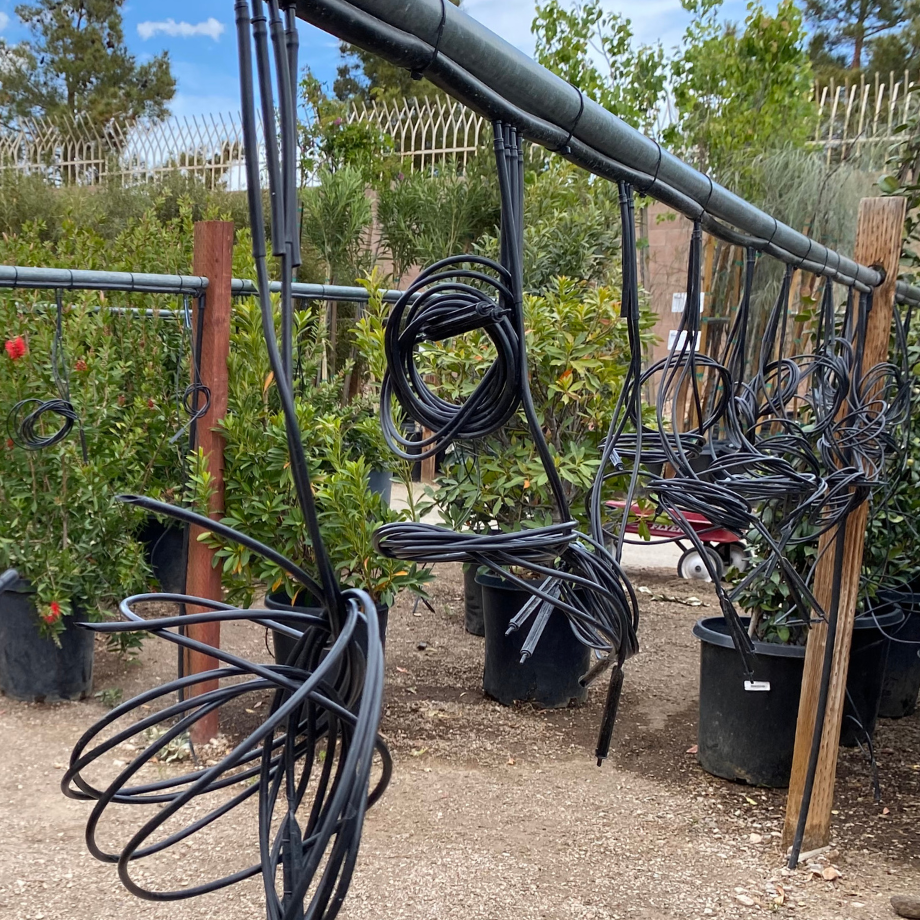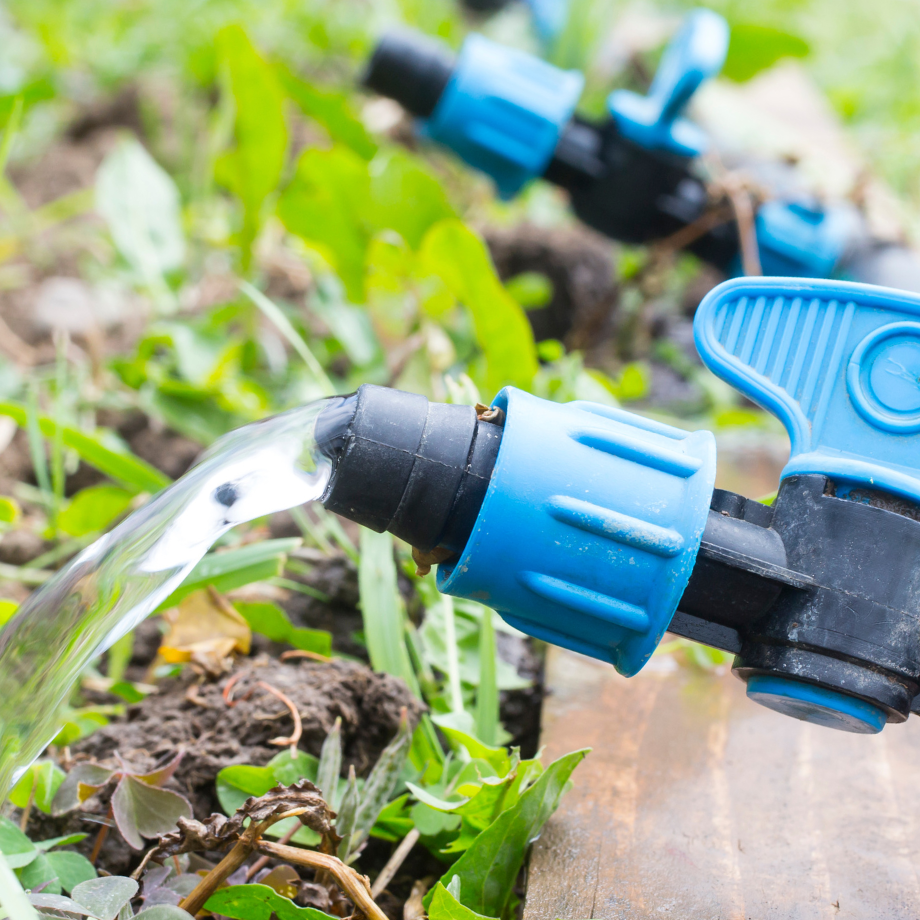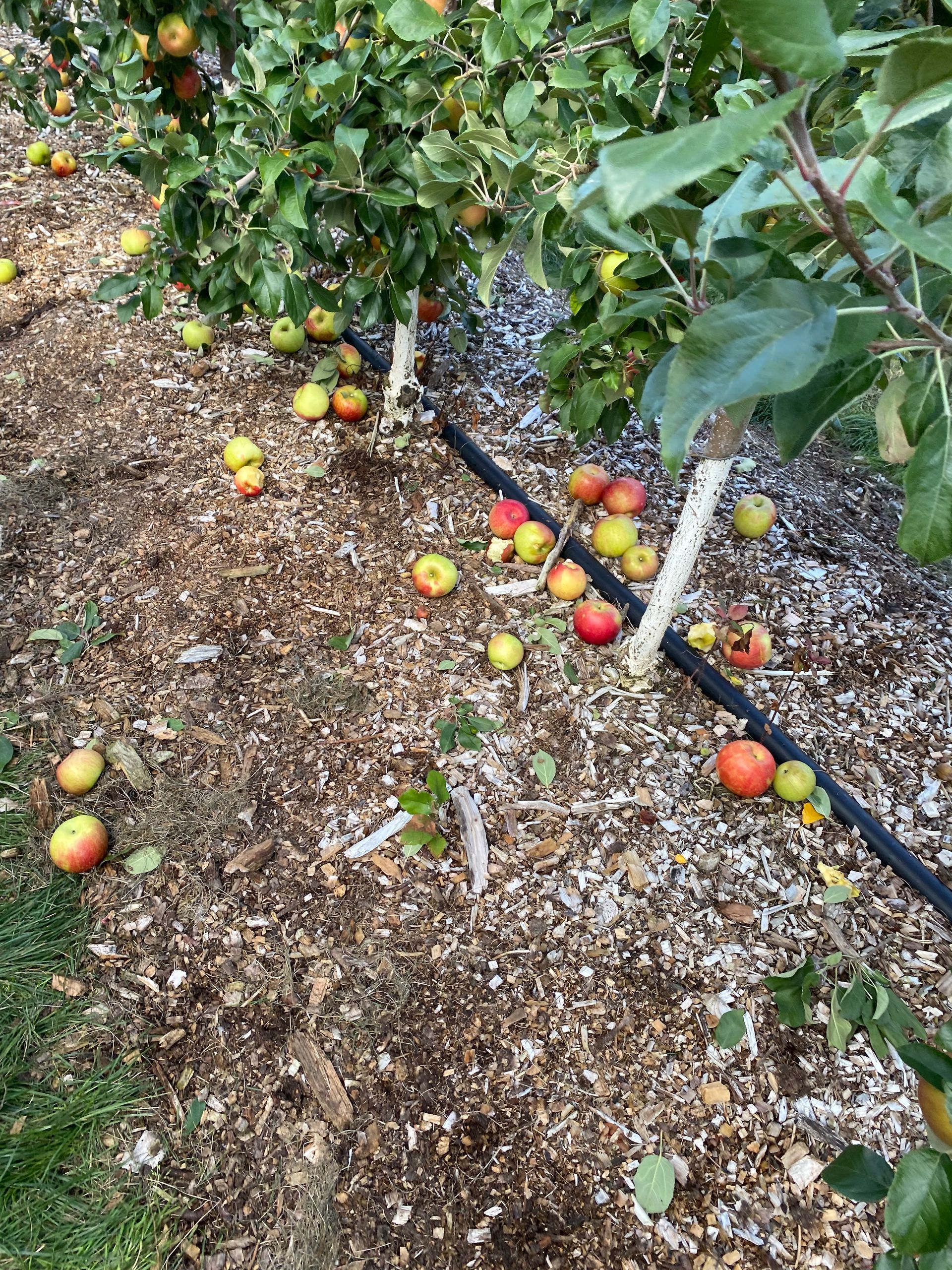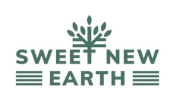What Is Drip Line?

We test and review gardening and other outdoor products based on an independent, multi-point methodology. If you use or links to purchase something, we may earn a commission. Read our disclosures.
Do you know about drip line? Do you know what it is?
We know that you know about drip tape because we did a deep dive on it the other day. But what about drip line, it's counterpart?
Well, as usual, we will clear up everything and anything you need to know about drip line so you can decide what's best for you and your garden.
Please Note: I will be answering this question from the perspective of a home gardener. If you are looking for larger commercial applications, you may need to look elsewhere.
What Is Drip Line? Everything You Need To Know

Drip line is a type of drip irrigation that emits water at certain intervals along the length of the line. Typically it comes in either 1/4" tubing or 1/2" tubing depending on the needs of the gardener.
We'll cover both down below.
But in general. It is not meant for large plots or crops - it's much better suited for home gardens. Not only that but you can do a lot of cool stuff with it - you can lay it on the ground or bury it under soil or mulch.
You can hang it on a wire that runs through your garden. You can use it for anything from vineyards down to row crops.
Drip line is ideal for:
- Shorter lengths of tubing: Drip tape is really ideal for shorter runs of gardening. You can use this with any raised bed gardening. 1/4" tubing is ideal for shorter plots or raised beds, but if you need it, you can use 1/2" tubing for longer rows, or steep inclines.
- Flexibility: We mentioned this before, but if you want an irrigation system with some flexibility, then drip line is the way to go. You can wrap it around the root zones of your plants with ease. 1/4" Drip Lines are extremely flexible for gardens that aren't in rows. 1/2" drip line tubing is a little less flexible but better over long gardening lengths.
- Durability Long-term use: Though it might not be that much more durable than other options, it has a much lower profile. That means it's less susceptible to getting hit or clipped by people working or walking nearby. Not only that but you can easily lift the drip line above the surface level of your soil.
RELATED: Drip Tape vs Drip Line

In general, 1/4" drip line is ideal for shorter lengths like raised beds or small gardens. 1/2" drip line is great if you need drip irrigation for over 30'.
Either way, both lengths of tubing are extremely customizable, and you can expand and contract your irrigation system as you see fit.
Either way, the idea is to get water delivered directly to your plant's root zone. Not only that, but you have a more efficient level of water usage, as with a drip irrigation system, the water doesn't evaporate nearly as much as over head sprinklers or sprayers.

Features
Flexibility: Drip line is pretty flexible. Sometimes too flexible (just kidding - no such thing). But let's say you have a garden with plants or crops that zigzag around a plot.
Drip tape is great for that because you bend it any which way to suit the needs of the garden.
On top of being more flexible, you can make tree rings with drip line. In fact, that is how most trees are irrigated - with a piece of drip line looped around the base of the tree. So if you need to water trees, you know what to get.
RELATED: Soaker Hoses vs Drip Irrigation
Durability: Drip line is quite durable. It has somewhat thicker walls than its drip tape counterpart so it's not as prone to damage. Drip line typically comes it 1/2" or 1/4" varieties.
Emitter Spacing: As we said above, the emitter spacing is pre-built into the drip line. Common spacing options for drip line are 6", 12" or 24". If you look around, you can probably find more specific spacing for your needs.
Cost: Drip line is made of thicker material compared to say, drip tape. That means drip line systems or just plain old drip tape tends to run a bit higher in cost.
Now You Know All About Drip Line

Drip irrigation systems come in all shapes in sizes. Drip tubing this and drip tape that. What does it all mean? Well, we hope we cleared up at least one more facet of this somewhat complex topic.
RELATED: Best Drip Irrigation Systems
Slowly but steadily, we plan to cover every single aspect of drip irrigation so you know exactly what you need to get out there and build yourself the perfect home garden.
What Is Drip Line FAQs
Before you go...
We hope we cleared the air for you on drip line. Some things are harder to understand by reading about them but easier to understand in practice.

Carl Anderson
Carl Anderson is an avid outdoorsman with a keen interest in writing about and reviewing tools. He has over 20 years of writing experience and the only time he isn't feverishly typing away at his computer is when he's outside in nature working on his projects. You can learn more about him here.
Join our community!
Join to receive guides, insights, and the latest gardening deals!
